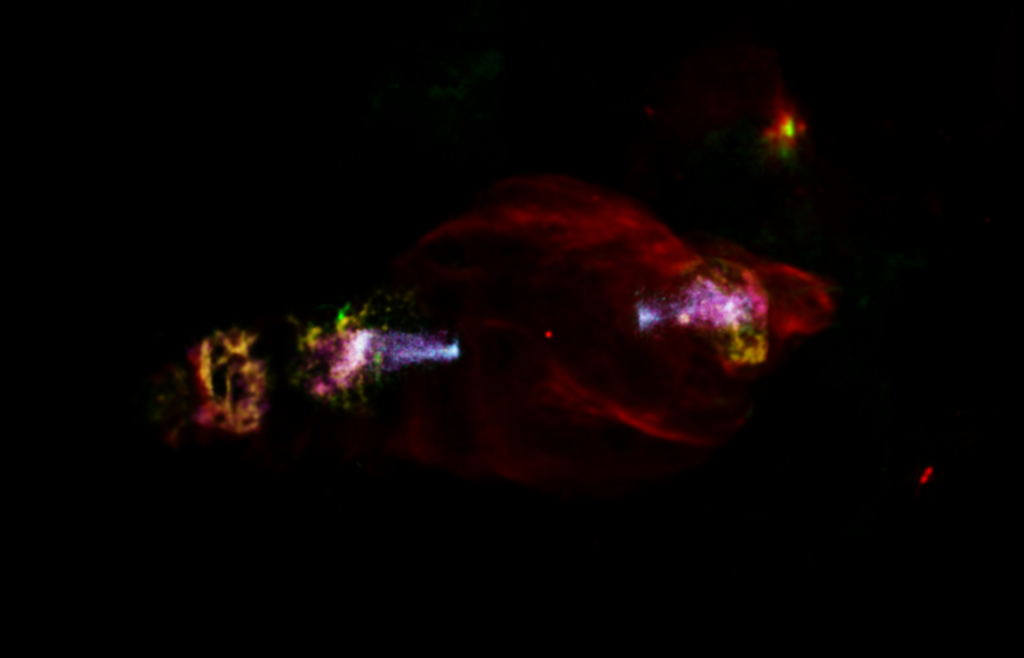The European Space Agency (ESA) has published a new image taken with the XMM-Newton X-ray telescope. It captures the W50 nebula, also known informally as the Manatee Nebula.

W50 is located at a distance of 18 thousand light-years from Earth in the direction of the constellation Aquila. It was formed about 30 thousand years ago as a result of the collapse of a giant star. This is one of the largest such structures in the sky. If we could see W50 with the naked eye, it would occupy an area equivalent to four lunar disks.
Unusually for a supernova remnant, there is a black hole left in the core of W50. This central “microquasar” is known as SS 433. It emits powerful jets moving at a speed close to a quarter of the speed of light. They pierce the surrounding gas envelope, creating a characteristic shape with two petals. In the published image, SS 433 is indicated by a red dot in the middle of the image.
The nebula attracted the attention of scientists in 2018, when it was discovered that it is a source of high-energy particles. To determine their origin, scientists used the XMM-Newton X-ray telescope. It found that the acceleration of particles occurs in an X-ray jet escaping from a region located about 100 light-years from the microquasar (in the picture it is shown in purple and blue colors closer to the left side of SS 433). This region stretches for about 300 light-years.
According to the researchers, the stream of particles ejected from the vicinity of the black hole is re-charged in this area due to shock waves in expanding gas clouds and enhanced magnetic fields. Since W50 acts as a giant natural laboratory that allows studying a wide range of astrophysical phenomena, scientists intend to continue its observations in the future.
Earlier we talked about the discovery of one of the slowest black holes.
According to https://www.esa.int
Follow us on Twitter to get the most interesting space news in time
https://twitter.com/ust_magazine

